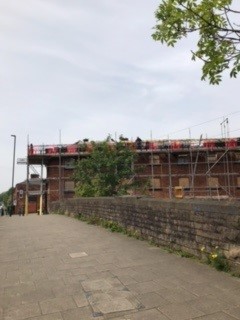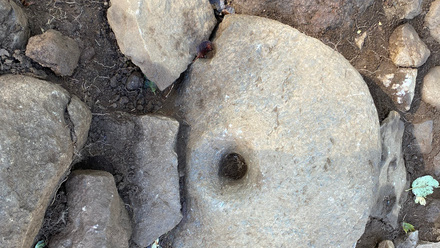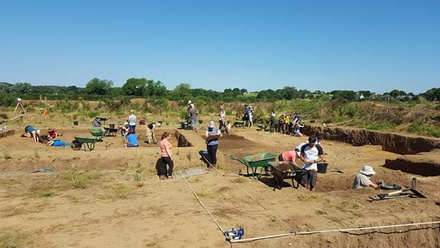Volunteer Week: All thanks to a volunteer ...

The CBA casework team owe a huge debt of gratitude to our wonderful team of volunteers who help keep our publicly accessible database up to date. We could not do what we do without the weekly commitment of a team of c.40 trained and skilled volunteers playing their part in logging the c.300 planning applications onto our database each week to reach the desks of caseworkers across the national amenity societies. To all our volunteers – Thank you!
For Volunteers Week we wanted to shine a light on the impact that one of our volunteers, Lesley Mills, has had in her area and say a special thank you to her.
Context
The national amenity societies (collectively known as the JCNAS) have a statutory role within the planning system. All Local Planning Authorities (LPAs) in England and Wales are required to notify us about any Listed Building Consent (LBC) applications that involve the “partial or total demolition of a listed building”. This is one way in which protection of the historic environment is built into the planning system.
There is an established principle of ‘informed change’ to the historic environment. This is far from a ‘don’t touch’ attitude to everything that is old. Evolution and change are central to the way our built environment has developed over centuries, and accounts for a lot of its character and charm. Instead, the onus is on making changes in a way that causes minimal harm to what makes an old site special and interesting, so that its history and time depth can be enjoyed by future generations.
The role of the national amenity societies is assessing LBC applications to ensure that proposals achieve this balance of minimising any harm to a place’s special interest whilst securing their sustainable future.
What Lesley did
As well as volunteering with us, Lesley is keenly engaged with her local historic environment in Oldham. Being familiar with our casework database, when she saw scaffolding on Walmsley’s Warehouse, she checked to see what was happening there. There was no record of any notifications about the site, and we were able to confirm that we had received very few notifications from Oldham Council in the previous two years.

The CBA got in touch with Oldham Council to remind them about the requirements to consult the JCNAS. The CBA have been impressed by the pro-active response we have had from Oldham’s Deputy Chief Executive (Place) and Development Management Team Leader. They have reached out to us to better understand our interpretation of “partial demolition” and conducted a review within their planning team around when to notify the JCNAS about LBC applications.
A common problem
It is not unusual for the technical admin staff at LPAs to be unclear on when to notify us. Our broad advice is ‘better safe than sorry’; it is better to consult us on minor works than face the consequences of failing to consult us, as seen in the Willoughby Almshouses case where Broxtowe Borough Council’s failure to notify the national amenity societies resulted in a judicial review.
‘Partial or total demolition’ is open to a huge range of interpretation, or at least the ‘partial’ aspect is. This could entail replacing windows, knocking through internal walls, consolidating extensions. Any ‘change of use’ of a building, for example converting a barn or a warehouse into housing, will involve a cumulative amount of demolition. If poorly executed this can seriously erode the character of a building. If done well, a new lease of life is breathed into an old building that maintains its contribution to the historic identity of a place whilst also securing its future use. Obviously, sometimes the demolished built fabric is original or significant whilst other times only recent building fabric is impacted, which does not contribute to a building’s special interest. Creating new window openings requires the loss of an area of wall or roof. Sometimes this will impact the character and interest of a building, other times it won’t. It depends on what the special interest of the building is.
How confusing!
When does ‘partial demolition’ matter? Who knows? Well, conservation officers at LPAs make that call and so do caseworkers at the national amenity societies. We offer freely available specialist advice about proposed changes to listed buildings – where and how proposals can be improved to minimise any harm to a site’s special interest (often called ‘significance’).
The outcome
We know from our positive engagement with Oldham Council that we will hear a lot more about proposed changes to the historic environment there in the future. We were also able to emphasise that as statutory notifyees (rather than consultees like National Highways, Natural England, Historic England, etc) we respond selectively on applications where our advice is most helpful, and they need not wait for a response from us to determine an application. This means that there will be no delay to the application process as a result of the notification, and there is no reason not to take advantage of the expert advice on offer.
Thank you Lesley for triggering this chain of events.
And thank you to all of our volunteers, from casework and beyond, for your incrdible work in helping us promote archaeology and encourage sustainable reuse.






